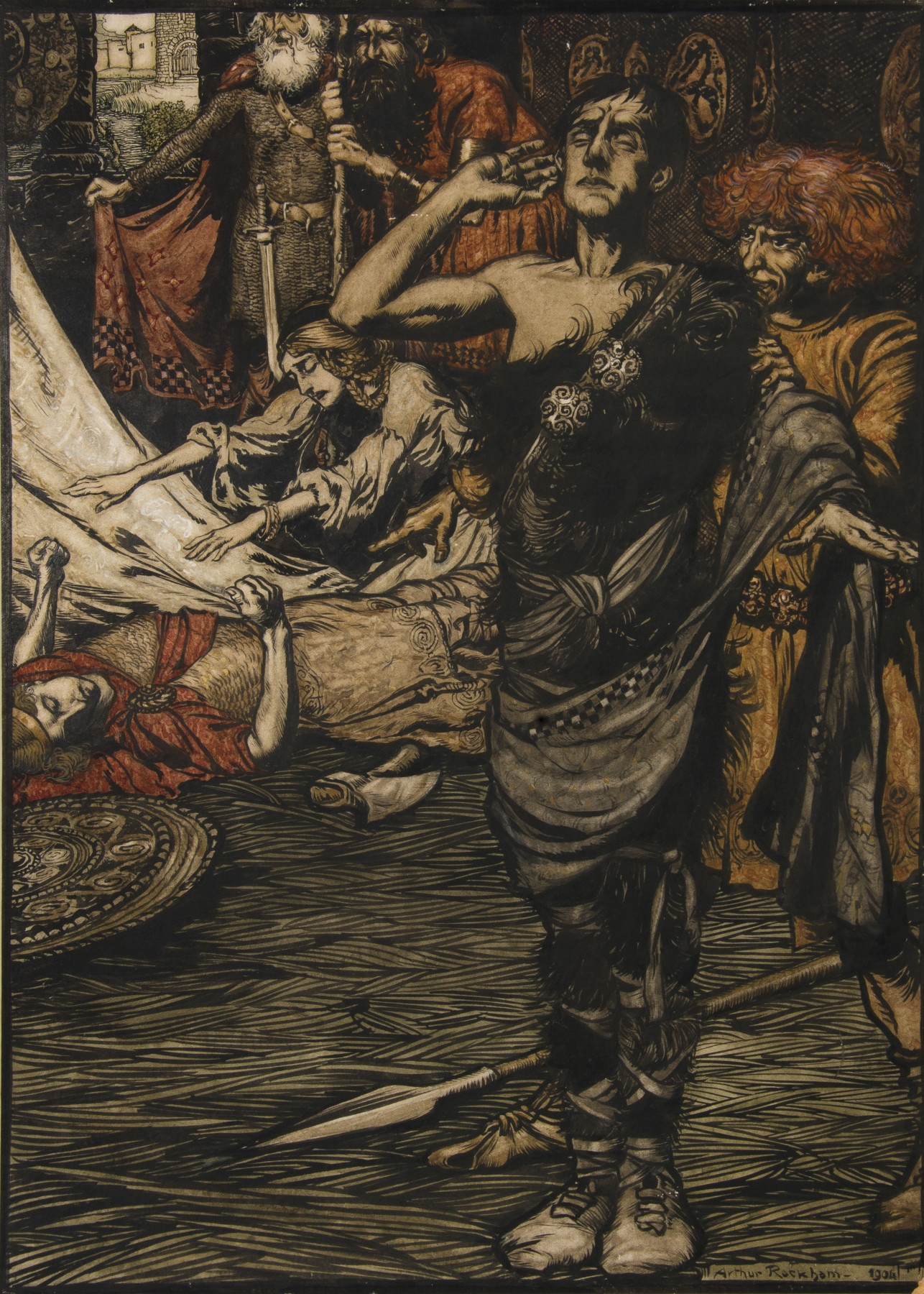
(click image to enlarge)
Arthur Rackham reworked the drawing between its appearances in Little Folks and The Land of Enchantment, and subsequently coloured it.
There broke forth a wailing and a lamentation
Between 1896 and 1905, Arthur Rackham regularly illustrated stories that appeared in Little Folks, a ‘magazine for the young’ edited by his friend, Sam Hamer. In 1907, the magazine’s publisher, Cassell, collected together five of these stories, with their illustrations, in the volume, The Land of Enchantment. One the five, ‘Stories from the Edda’, was itself a collection of eleven Norse myths retold by Emma Sophia Buchheim (1860-1951), a writer, translator and lecturer in German at King’s College, London. Her retellings were based on two Icelandic literary works, the Prose Edda and the Poetic Edda, both written down in the thirteenth century. The present work illustrates the ninth of the ‘Stories from the Edda’, entitled ‘The Death of Balder’. The gods were afraid for the safety of Balder the Beloved, one of their number and the son of Odin and Frigg. Frigg took an oath from all things living and dead that no harm should come to him. The Gods then considered him so safe that it became their sport to throw weapons at him. However, one god, Loki, who was envious of Balder, discovered that Frigg had asked no oath from mistletoe, because it seemed so insignificant. So he obtained the mistletoe and gave it to Hœder, who, blind and weaponless, had not joined in the sport. Under Loki’s direction, Hœder threw the plant, pierced Balder’s skin and killed him. Rackham’s illustration captures the immediate response to his death, as the gods begin to lament. Balder’s brother, Hermodhr, followed his body to the underworld. On arrival, he pleaded with Hel, the presiding goddess, to let Balder return with him, because the whole world was grieving. She agreed to let him go, on condition that all things on earth, both living and dead, wept for him. Unfortunately, a giantess named Thœck (believed by some to be Loki in disguise) refused to do so, saying that ‘Little good had I from him, living or dead’. So Balder remained with Hel. The unwitting murderer, Hœder, was killed by Vali, another of Balder’s brothers, while Loki was permanently bound to three upright stones. The death of Balder is considered the first in a chain of events that leads to Ragnarok, the twilight of the gods.